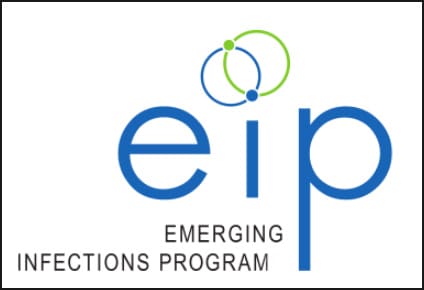Emerging Infections Program

The Emerging Infections Program (EIP) is a network of 12 state health departments that translates surveillance and research activities into informed policy and public health practice to address emerging infections. The network is a collaboration between state health departments, academic institutions, and other key public health stakeholders that builds on national surveillance and notifiable disease reporting by collecting more extensive data on disease characteristics and risk factors to directly inform public health action.
For example, EIP sites investigate laboratory results and medical records data for variables not collected through standardized reporting, such as underlying medical conditions, clinical course, outcomes, and vaccination status.
EIP sites rely on robust and integrated data reporting and sharing systems. These will be strengthened through CDC investments in data modernization capabilities to improve interoperability between data reporting systems and the use of automated data abstraction techniques to collect data faster.
EIP sites also investigate causes of infectious disease outbreaks, evaluate effectiveness of interventions, and promote prevention. EIP can be leveraged in emergencies to rapidly scale up surveillance of emerging infectious diseases and inform quick decision making. During the COVID-19 pandemic, EIP sites collaborated to collect extensive data on hospitalized patients—including those first affected—that enhanced understanding of the epidemiology of the disease among adults and children, described differences in hospitalization rates of vaccinated and unvaccinated people, and informed recommendations of strategies to prevent infection.
EIP’s Impact
The EIP network’s unique strength and contributions lie in its ability to quickly translate surveillance, research, and non-research activities into informed policy and public health practice. EIP work has been instrumental in:
- providing timely assessments for disease severity and national disease burden estimates for respiratory viral diseases, including COVID-19, influenza, and respiratory syncytial virus (RSV),
- evaluating and honing strategies for preventing severe disease in newborns caused by Group B Streptococcus,
- determining the burden of foodborne illnesses in the United States and monitoring trends in these pathogens over time,
- providing estimates of SARS-CoV-2‒ and influenza‒associated hospitalizations to inform public health policy,
- characterizing hospitalized SARS-CoV-2 and influenza cases to investigate vaccine impact, and
- defining the national burden of healthcare-associated infections in hospitals and identifying priorities for surveillance and prevention.